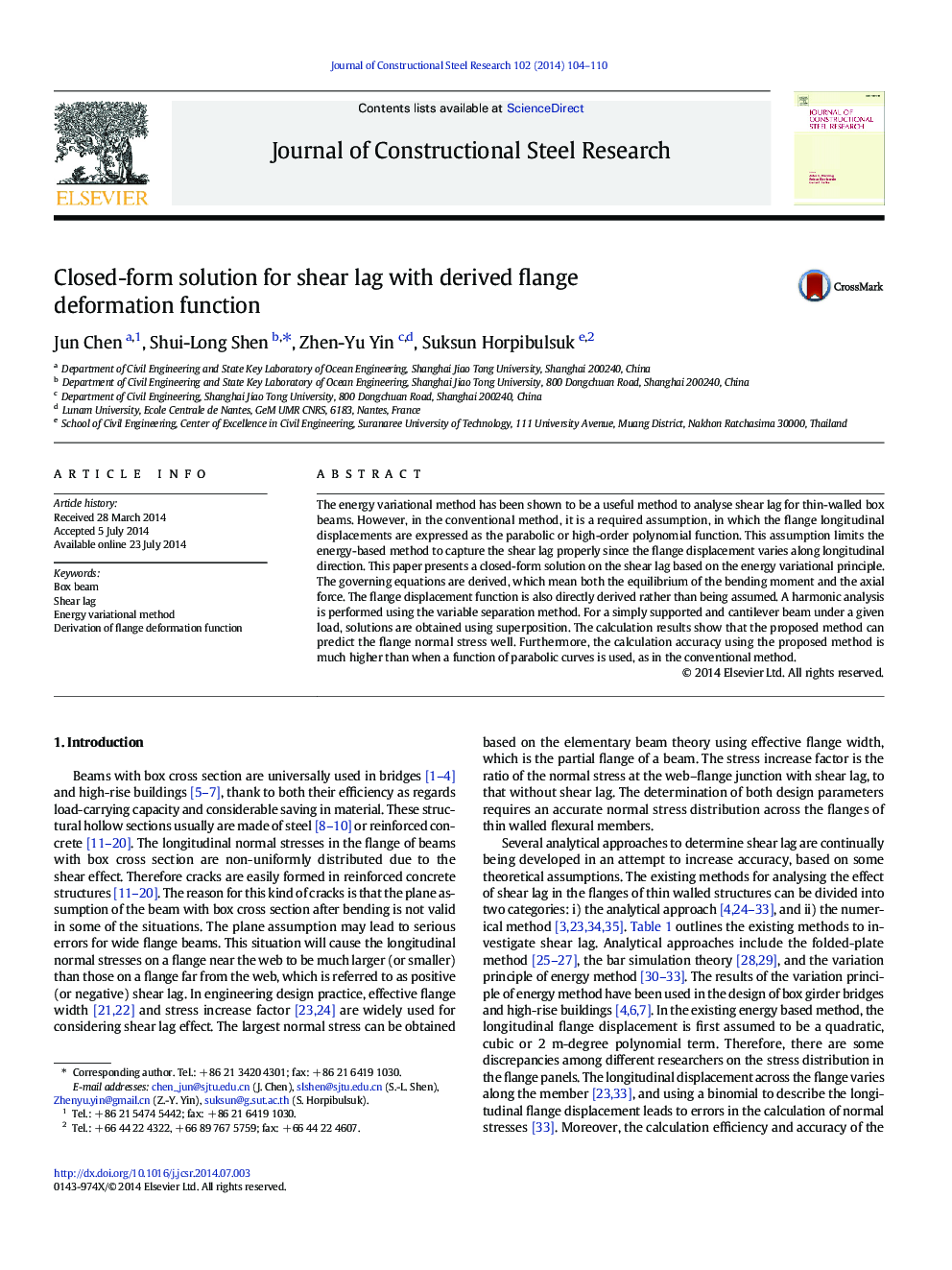| Article ID | Journal | Published Year | Pages | File Type |
|---|---|---|---|---|
| 284603 | Journal of Constructional Steel Research | 2014 | 7 Pages |
•A closed-form solution for shear lag in a thin-walled box beam is presented.•The proposed method is an improved analysis based on energy variational principle.•Derived governing equations mean both equilibrium of bending moment and axial force.•Displacement function is derived, rather than being assumed as in existing methods.•The proposed solution improves the accuracy of the results.
The energy variational method has been shown to be a useful method to analyse shear lag for thin-walled box beams. However, in the conventional method, it is a required assumption, in which the flange longitudinal displacements are expressed as the parabolic or high-order polynomial function. This assumption limits the energy-based method to capture the shear lag properly since the flange displacement varies along longitudinal direction. This paper presents a closed-form solution on the shear lag based on the energy variational principle. The governing equations are derived, which mean both the equilibrium of the bending moment and the axial force. The flange displacement function is also directly derived rather than being assumed. A harmonic analysis is performed using the variable separation method. For a simply supported and cantilever beam under a given load, solutions are obtained using superposition. The calculation results show that the proposed method can predict the flange normal stress well. Furthermore, the calculation accuracy using the proposed method is much higher than when a function of parabolic curves is used, as in the conventional method.
